|
|
|
|
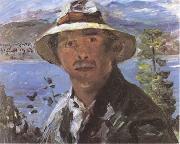 |
Lovis Corinth
|
|
German Painter, 1858-1925
German painter and writer. He grew up on his family's farm and tannery. As a child he showed interest in art, taking informal lessons in drawing from a local carpenter and caricaturing his primary school teachers. Corinth's father sent him to secondary school in the nearby city of K?nigsberg (now Kaliningrad), where he lived with his widowed aunt. A superstitious woman fond of story-telling, she possessed what Corinth later described as a coarse temperament and an unrestrained, 'demonic' humour. These qualities and his aunt's bohemian acquaintances, including fortune-tellers and soothsayers, fascinated the young Corinth, accustomed to his more reserved parents. |
|
|
|
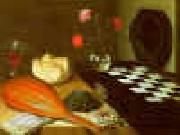 |
Lubin Baugin
|
|
1610-1663
French
Lubin Baugin Gallery
French painter. He became a master in the painters guild of Saint-Germain-des-Pras in 1629. From c. 1636 he was in Italy, but he is known to have been in Paris again in 1641; in 1645 he became a member of the Acadmie de St Luc, and in 1651 he was also a member of the Acadmie Royale after the temporary amalgamation of the two institutions. Like many of his generation he was deeply influenced by the art of the Fontainebleau school. |
|
|
|
 |
Luca Giordano
|
|
1632-1705
Italian
Luca Giordano Gallery
Charles II of Spain towards 1687 invited him over to Madrid, where he remained for 10 years (1692-1702). In Spain, he produced works for the Royal Palace of Madrid, the Buen Retiro palace, El Escorial, Toledo, and other sites. Giordano was popular at the Spanish court, and the king granted him title as a "caballero". One anecdote of Giordano's speed at painting is that, he was once asked by the Queen of Spain what his wife looked like. On the spot, he painted his wife into the picture before him for the Queen.
In Spain he executed numerous works, continuing in the Escorial the series commenced by Cambiasi, and painting frescoes of the Triumphs of the Church, the Genealogy and Life of the Madonna, the stories of Moses, Gideon, David and the Celebrated Women of Scripture, all works of large dimensions. His Dream of Solomon (1693, now at Prado) dates from this period. His pupils, Aniello Rossi and Matteo Pacelli, assisted him in Spain. In Madrid he worked more in oil-colour, a Nativity there being one of his best productions. |
|
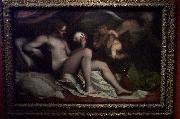 |
Luca Cambiaso
|
|
Luca Cambiasi (surname also written Cambiaso or Cangiagio; 1527 - 1585) was an Italian painter and draftsman, familiarly known as Lucchetto da Genova.
|
|
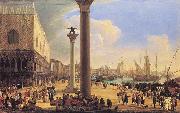 |
Luca Carlevarijs
|
|
Luca Carlevarijs or Carlevaris (20 January 1663 - 12 February 1730) was an Italian painter and engraver of landscapes (vedutista).
Carlevarijs was born in Udine, but worked mostly in Venice. His vedute of Venice are among the earliest Baroque depictions of the city. He was influenced by the Dutch painter active in Rome, Caspar van Wittel (often called Vanvitelli). The painters Canaletto and Antonio Visentini are said to have been highly influenced by or pupils of his. Johan Richter did work with him. Also called Luca Casanobrio or Luca di Ca Zenobri, for his patronage by the latter family.
He painted landscapes, sea-pieces, and perspective views. He completed over a hundred etchings of views in Venice, which give an exact representation of the principal places in that city. He died in Venice. |
|
 |
Luca Carlevaris
|
|
1665-1731
Italian
Luca Carlevaris Location
Luca Carlevarijs or Carlevaris (1663 - 1730) was an Italian painter of landscapes (vedutista).
Carlevarijs was born in Udine, but worked mostly in Venice. His veduta of Venice are among the earliest Baroque depictions of the city. He was influenced by the Dutch painter active in Rome, Caspar van Wittel (often called Vanvitelli). The painters Canaletto and Antonio Visentini are said to have been highly influenced by or pupils of his. Johan Richter did work with him. |
|
|
|
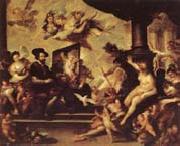 |
Luca Giordano
|
|
Italian Baroque Era Painter, ca.1634-1705
Italian painter and draughtsman, active also in Spain. He was one of the most celebrated artists of the Neapolitan Baroque, whose vast output included altarpieces, mythological paintings and many decorative fresco cycles in both palaces and churches. He moved away from the dark manner of early 17th-century Neapolitan art as practised by Caravaggio and his followers and Jusepe de Ribera, and, drawing on the ideas of many other artists, above all the 16th-century Venetians and Pietro da Cortona, he introduced a new sense of light and glowing colour, of movement and dramatic action. |
|
|
|
|
|
 |
Luca Signorelli
|
|
Crtona 1441-1523
.Italian painter of the Umbrian school, who probably studied with Piero della Francesca. He worked in Cortona, where some of his paintings have remained. Subsequently he worked in the Cathedral of Perugia, in Volterra, and at Monte Oliveto before undertaking (1499) the decoration of the Cappella Nuova in the Orvieto Cathedral. There he represented the apocalyptic series of the Story of the Anti-Christ, the End of the World, the Resurrection of the Bodies, Paradise, and the Inferno, as well as figurations from antique poems and the Divine Comedy. The infernal scenes are remarkable for their imaginative evocation of fiends and tortures of Hell. Michelangelo was influenced by his powerful treatment of anatomy and the vivid realism he used for dramatic ends. Signorelli's paintings in the Vatican, where he went in 1508, were later sacrificed to make way for some of Raphael's work. |
|
 |
Lucas Cranach
|
|
1472-1553
German
Lucas Cranach Locations
Lucas Cranach the Elder was born at Kronach, Franconia. He was apparently trained by his father, Hans, a painter, and from 1495 to 1498 undertook work at Kronach for Coburg and Gotha. There is evidence that Cranach resided in Vienna between about 1500 and 1504. In 1504 he married Barbara Brengbier of Gotha; they had three daughters and two sons, Hans (died 1537) and Lucas the Younger (1515-1586), both of whom were painters.
In 1505 Cranach established residence at Wittenberg, where he was court painter to three successive electors: Frederick the Wise, John the Constant, and John Frederick the Magnanimous. Cranach was a prosperous and respected citizen. He owned several houses and land, held the office of councilor, and was a burgomaster. He also worked for other princely patrons and was a follower and lifelong friend of Martin Luther.
In 1550 Cranach followed John Frederick the Magnanimous to Augsburg, where the elector was in exile, and in 1552 accompanied him to Weimar. Cranach died in Weimar on Oct. 16, 1553.
|
|
|
|
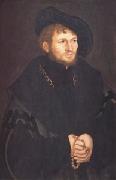 |
Lucas Cranach
|
|
Kronach 1472-Weimar 1553
German painter and engraver. The son of a painter, he settled in Wittenberg c.1504 and was court painter successively under three electors of Saxony. There he maintained a flourishing workshop and was twice burgomaster. Cranach was a close friend of Martin Luther, whose doctrine he upheld in numerous paintings and woodcuts, and he has been called the painter of the Reformation. He was a rapid and prolific painter, and the work turned out by his studio is uneven in quality. Naïve and fanciful, often awkward in draftsmanship, it has, nonetheless, freshness and originality and a warm, rich palette. His portraits are particularly successful. Among his best-known works are Repose in Egypt (Gemäldgalerie, Staatliche Mus., Berlin-Dahlem); Judgment of Paris (Staatliche Kunsthalle, Karlsruhe); Adam and Eve (Courtauld Inst., London); and Crucifixion (Weimar). The latter contains figures of Luther and Cranach. His many famous protraits include those of Elector John Frederick and Self-Portrait (Uffizi). Cranach was also an accomplished miniaturist. He produced a few copperplates and designs for woodcuts. His son and pupil Lucas Cranach, the Younger, |
|
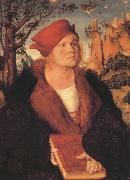 |
Lucas Cranach the Elder
|
|
b. 1472, Kronach, d. 1553, Weimar. German painter and printmaker. He took his name from the town of his birth. Little is known about his early life or training. In Vienna (c. 1501 ?C 04) he painted some notable portraits and landscapes characteristic of the Danube school. From 1505 to 1550 he was court painter in Wittenberg, where he achieved great success and wealth painting portraits, mythological subjects, and altarpieces for Protestant and Catholic churches. He attracted so many young artists to Wittenberg that the town became an art centre. A friend of Martin Luther, Cranach became known as the chief pictorial propagandist of the Protestant cause in Germany. He produced numerous engravings and more than 100 woodcuts, notably for the first German edition of the New Testament (1522). After his death, his style was perpetuated by his son, Lucas the Younger (1515 C 86). |
|
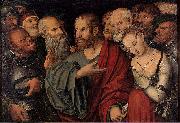 |
Lucas Cranach the Younger
|
|
(October 4, 1515 ?C January 25, 1586) was a German Renaissance artist, known for his woodcuts and paintings.
He was a son of Lucas Cranach the Elder who began his career as an apprentice in his father's workshop. Henceforth, his own reputation and fame grew. After his father's death, he assumed control over the workshop.
The style of their paintings can be so similar that there have been some difficulties in attribution of their works. |
|
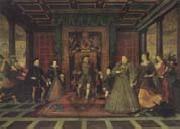 |
Lucas de Heere
|
|
1534-1584,Painter, tapestry designer, draughtsman and poet. He was probably trained by his parents. The suggestion that he became a member of the Ghent Guild of St Luke before 1540 was derived from an incorrect interpretation of the Guild records for 1574-5. Van Mander recorded that, as a boy, de Heere accompanied his father on his trips to the stone-quarries of the Meuse region, where he made topographical drawings. Lucas was sent to Frans Floris's studio c. 1555 or shortly before to complete his training, and he may have collaborated with his master on tapestry cartoons and stained-glass designs, although no cartoons or preparatory drawings survive. During this period de Heere also became noted as a poet in the local rhetoricians' chambers. His father's influence helped him to gain commissions in Ghent from 1555, and, according to Marcus van Vaernewijck (1568), he worked on new stained-glass windows for the St Janskerk in Ghent in the same year. |
|
|
|
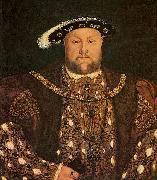 |
Lucas Horenbout
|
|
Lucas Horenbout, often called Hornebolte in England, (Ghent c. 1490 to 1495 - London 1544) was a Flemish artist who moved to England in the mid-1520s and worked there as "King's Painter" and court miniaturist to King Henry VIII from 1525 until his death. He was trained in the final phase of Netherlandish illuminated manuscript painting, in which his father Gerard was an important figure, and was the founding painter of the long and distinct English tradition of portrait miniature painting. He has often been suggested as the Master of the Cast Shadow Workshop, who produced royal portraits on panel in the 1520s or 1530s.
Horenbout trained in Ghent with his father, Gerard Horenbout, becoming a Master of the local Guild of Saint Luke in 1512. Gerard was an important Flemish manuscript illuminator in the dying days of that art-form, who had been court painter, from 1515 to about 1522, to Margaret of Austria, Regent of the Netherlands. Margaret was twice sister-in-law to Catherine of Aragon, still Henry's (first) Queen when the Horenbouts came to England. Gerard is sometimes identified with the "Master of James IV of Scotland", one of the many artistic personalities identified as a significant illuminator in the Ghent-Bruges school of the period, to whom no historical person can be attached.
Horenbout came over to England at an unknown date with, or perhaps before, his sister Susanna and his father. It has been suggested that their move was in connection with an attempt by the King, or possibly Cardinal Wolsey, to revive English manuscript illumination by establishing a workshop in London, but this is controversial. His father Gerard is first recorded in England in 1528, and later returned to the Continent, probably after 1531; he had died in Ghent by 1540. Susanna, who was also an illuminator, is recorded in 1529 as married to a John Palmer and in England.
Lucas is documented in England from September 1525, when he was first paid by the King as "pictor maker". By 1531 he was described as the "King's Painter", and this appointment was confirmed for life in June 1534, when he became a "denizen" - effectively a naturalised citizen. Horenbout was very well paid, at sixty-two pounds and ten shillings (but only thirty-three pounds and six shillings according to Richard Gay) per year, a "huge" sum according to Strong, and better than Holbein's thirty pounds a year in his period as Henry's court painter. He was granted a "tenement" in Charing Cross, and permitted to take on four foreign journeyman. Lucas was buried at Saint Martin in the Fields and left a wife and daughter, Margaret and Jacquemine. Margaret was paid sixty shillings three years later by Queen Catherine Parr for some paintings. |
|
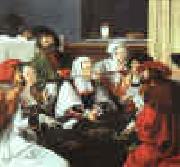 |
Lucas van Leyden
|
|
1489-1533 Dutch Lucas van Leyden Galleries Lucas van Leyden (Leiden, 1494 ?C August 8, 1533 in Leiden), also named either Lucas Hugensz or Lucas Jacobsz, was a Dutch engraver and painter, born and mainly active in Leiden, who was among the first Dutch exponents of genre painting and is generally regarded as one of the finest engravers in the history of art. He was the pupil of his father, from whose hand no works are known, and of Cornelis Engelbrechtsz, but both of these were painters whereas Lucas himself was principally an engraver. Where he learnt engraving is unknown, but he was highly skilled in that art at a very early age: the earliest known print by him (Mohammed and the Murdered Monk) dates from 1508, when he was perhaps only 14, yet reveals no trace of immaturity in inspiration or technique. Lot and his daughters (ca. 1509)In 1514 he entered the Painters' Guild at Leiden. He seems to have travelled a certain amount, and visits are recorded to Antwerp in 1521, the year of D??rer's Netherlandish journey, and to Middelburg in 1527, when he met Jan Mabuse. An unbroken series of dated engravings makes it possible to follow his career as a print-maker and to date many of his paintings, but no clear pattern of stylistic development emerges. D??rer was the single greatest influence on him, but Lucas was less intellectual in his approach, tending to concentrate on the anecdotal features of the subject and to take delight in caricatures and genre motifs. Carel van Mander characterizes Lucas as a pleasure-loving dilettante, who sometimes worked in bed, but he left a large oeuvre, in spite of his fairly early death, and must have been a prodigious worker. Lucas had a great reputation in his day (Vasari even rated him above D??rer) and is universally regarded as one of the greatest figures in the history of graphic art (he made etchings and woodcuts as well as engravings and was a prolific draughtsman). His status as a painter is less elevated, but he was undoubtedly one of the outstanding Netherlandish painters of his period. He was a pioneer of the Netherlandish genre tradition, as witness his Chess Players (Gemäldegalerie, Berlin) which actually represents a variant game called 'courier' - and his Card Players (National Gallery of Art, Washington), while his celebrated Last Judgement triptych (Lakenhal Museum, Leiden, 1526-27) shows the heights to which he could rise as a religious painter. It eloquently displays his vivid imaginative powers, his marvellous skill as a colourist and his deft and fluid brushwork. |
|
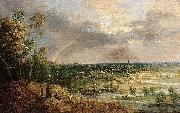 |
Lucas van Uden
|
|
(18 October 1595 - 4 November 1672) was a Flemish Baroque painter specializing in landscapes.
Lucas van Uden was born in Antwerp, where he entered the guild of St. Luke in 1626-27. Although he was never part of Peter Paul Rubens's studio, his works are partly indebted to that master. Van Uden even made copies of Rubens's works on several occasions. His technique, however, owes as much to earlier painters like Joos de Momper and Jan Brueghel the Elder. General characteristics are a tonally-green recessive view punctuated by slender trees and populated by incidental pastoral and peasant figures. Many of Van Uden's figures were either copied from Rubens or painted by David Teniers the Younger. He is often associated with fellow landscape painter Jan Wildens.
|
|
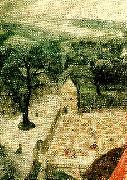 |
lucas van valchenborch
|
|
Lucas van Valkenborch (also "Valckenborch," "Valkenborgh") (c. 1535, Leuven - February 2, 1597, Frankfurt am Main), was a member of a family of Flemish landscape and genre painters. |
|
|
|
|
|
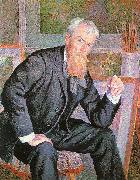 |
Luce, Maximilien
|
|
French Pointillist Painter, 1858-1941
French painter and printmaker. He was born and brought up in the working-class surroundings of Montparnasse, and an interest in the daily routines and labours of the petit peuple of Paris informs much of his art. After an apprenticeship with the wood-engraver Henri Theophile Hildebrand (b 1824), in 1876 he entered the studio of the wood-engraver Eugene Froment where he assisted in the production of engravings for various French and foreign publications such as L'Illustration and The Graphic. He also sporadically attended classes at the Academie Suisse and in the studio of Carolus-Duran. In Froment's studio he came into contact with the artists Leo Gausson and Emile-Gustave Peduzzi |
|
|
|
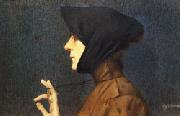 |
Lucien Levy-Dhurmer
|
|
French Art Nouveau Painter, 1865-1953,was a French Symbolist/Art Nouveau painter and potter. He was born Lucien Levy to a Jewish family in Algiers. In 1879 he began studying drawing and sculpture in Paris. In 1887 Levy began making his living in southern France, overseeing the decoration of ceramics. His own tastes in pottery decoration were influenced by Islamic Art. In 1895 he left for Paris to begin a career in painting; around this time he visited Italy and was further influenced by art of the Renaissance. In 1896 he exhibited his first pastels and paintings under the name Lucien Levy-Dhurmer; he'd added the last two syllables of his mother's maiden name (Goldhurmer), likely to differentiate himself from other people named Levy. His paintings soon became popular with the public and among fellow artists as well. He earned high praise for the academic attention to detail with which he captured figures lost in a Pre-Raphaelite haze of melancholy, contrasted with bright Impressionist colouration. His portrait of writer Georges Rodenbach is perhaps the most striking example of this strange and extraordinary synergy. |
|
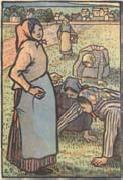 |
Lucien Pissarro
|
|
French Camden Town Group Painter, 1863-1944
was a French painter, printmaker and wood engraver. Eldest son of the Impressionist painter Camille Pissarro, he was born in Paris and studied with his father. His works employ techniques of Impressionism and its successor, Neo-impressionism, but he also exhibited with Les XX. From 1890 he lived in London, becoming a British citizen in 1916. While in England he was one of the founders of the Camden Town Group of artists. In 1919, he formed the Monarro Group with J.B. Manson as the London Secretary and Theo van Rysselberghe as the Paris secretary, aiming to show artists inspired by Impressionist painters, Claude Monet and Camille Pissarro. |
|
|
|
|
|
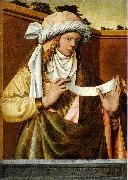 |
Ludger tom Ring the Younger
|
|
(1522-1584) was a German painter and draughtsman.
Ring was born in Menster. His father and brothers were also painters. Ring primarily painted portraits and still lifes. He died in Braunschweig in 1584.
|
|
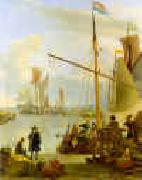 |
Ludolf Backhuysen
|
|
b.Dec. 18, 1631, Emden, East Frisia [Germany]
d.Nov. 17, 1708, Amsterdam, Neth.
Dutch
Ludolf Backhuysen Gallery |
|
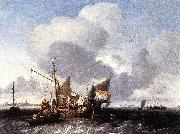 |
Ludolf Bakhuizen
|
|
(December 28, 1630 - November 17, 1708) was a German-born Dutch Golden Age painter who was the leading Dutch painter of maritime subjects after the two Willem van de Veldes (father and son) left for England in 1672.
He was born in Emden, East Frisia, and came to Amsterdam in about 1650, working as a merchant's clerk and a calligrapher. He discovered so strong a genius for painting that he relinquished the business and devoted himself to art from the late 1650s, initially in pen drawings. He studied first under Allart van Everdingen and then under Hendrik Dubbels, two eminent masters of the time, and soon became celebrated for his sea-pieces, which often had rough seas.
He was an ardent student of nature, and frequently exposed himself on the sea in an open boat in order to study the effects of storms. His compositions, which are numerous, are nearly all variations of one subject, the sea, and in a style peculiarly his own, marked by intense realism or faithful imitation of nature. In his later years Bakhuizen employed his skills in etching; he also painted a few examples each of several other genres of painting, such as portraits, landscapes and genre paintings. |
|
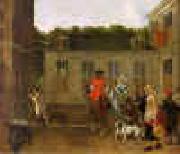 |
Ludolf de Jongh
|
|
1616-1679
Dutch
Ludolf de Jongh Galleries
Dutch painter. He was one of the most versatile Dutch painters of the 17th century, producing portraits, genre paintings of both domestic scenes and soldier life, landscapes with hunting scenes and a few historical subjects. According to Houbraken, he studied with Cornelis Saftleven in Rotterdam, Anthonie Palamedesz. in Delft, and Jan van Bijlert in Utrecht. In 1635 he went to France, where he stayed for seven years. His earliest known paintings are portraits and genre subjects that date from after his return to Rotterdam in about 1642 and strongly reflect the style of Palamedesz.'s work. The genre subjects and numerous hunting scenes (e.g. Riders before an Inn; Geneva, Mus. A. & Hist.) painted shortly before the 1650s show the influence of van Bijlert and other Utrecht painters, especially Jacob Duck and Dirck Stoop. |
|
|
|
|
|
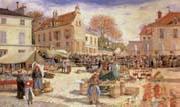 |
Ludovic Piette
|
|
French Painter, 1826-1878.French painter. He studied at the Ecole des Beaux-Arts in Paris during the 1850s under Isidore Pils and Thomas Couture. He attended classes at the Acad?mie Suisse and made his Salon d?but in 1857 with The Scorpion Broom (ex-Mus. B.-A., Rouen). His early works were often based on literary sources and include The Phantoms (exh. Salon 1859) and The Witches Appearing to Macbeth (exh. Salon 1861). Piette only exhibited at the Salon on two further occasions (1872 and 1876), preferring instead to sell his work at auction in the H?tel Drouot. In the early 1860s he abandoned literary subjects in favour of working directly from nature, a shift that probably relates to his developing friendship with Camille Pissarro. This association is first documented by Pissarros portrait of Piette in his Studio (1861; Dr and Mrs Jordan H. Trafimow priv. col.) and an important correspondence between the two artists from 1863 to 1877 survives. Piette portrayed Pissarro painting out of doors (c. 1870; priv. col., see Pissarro, exh. cat., ACGB, 1980, no. 322). |
|
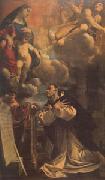 |
Ludovico Carracci
|
|
(Bologna 1555-1619)
Painter, draughtsman and etcher. His father, Vincenzo Carracci, was a butcher, whose profession may be alluded to in Ludovico's nickname 'il Bue', though this might also be a reference to the artist's own slowness. Ludovico's style was less classical than that of his younger cousins Agostino and Annibale, perhaps because of a mystical turn of mind that gave his figures a sense of other-worldliness. Like his cousins, he espoused the direct study of nature, especially through figure drawing, and was inspired by the paintings of Correggio and the Venetians. However, there survives in his work, more than in that of his cousins, a residue of the Mannerist style that had dominated Bolognese painting for most of the mid-16th century. Ludovico maintained a balance between this Mannerist matrix, his innate religious piety and the naturalism of the work of his cousins. With the exception of some travels during his training and a brief visit to Rome in 1602, Ludovico's career was spent almost entirely in Bologna. |
|
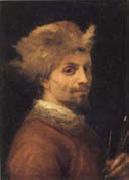 |
Ludovico Cigoli
|
|
Italian Baroque Era Painter ,
1559-1613
was an Italian painter and architect of the late Mannerist and early Baroque period, trained and active in his early career in Florence, and spending the last nine years of his life in Rome. Lodovico Cardi was born at Villa Castelvecchio di Cigoli, in Tuscany, whence the name by which he is commonly known. Initially, Cigoli trained in Florence under the fervid mannerist Alessandro Allori. Later, influenced by the most prominent of the Contra-Maniera painters, Santi di Tito, as well as by Barocci, Cigoli shed the shackles of mannerism and infused his later paintings with an expressionism often lacking from 16th century Florentine painting. For example, for the Roman patron, Massimo Massimi, he painted an Ecce Homo (now in Palazzo Pitti). Supposedly unbenknownst to any of the painters, two other prominent contemporary painters, Passignano and Caravaggio, had been requested canvases on the same theme. It is unclear if they are completely independent. Cigoli's painting seems to have been made with knowledge of Caravaggio's canvas; however, while Cigoli's work lacks the power of Caravaggio's naturalism, the background shade and sparse foreground shows how much he was moving away from crowded Florentine historical paintings. This work was afterwards taken by Bonaparte to the Louvre, and was restored to Florence in 1815. One of his early paintings was of Cain slaying Abel. |
|
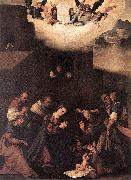 |
Ludovico Mazzolino
|
|
(1480 - c. 1528) - also known as Mazzolini da Ferrara, Lodovico Ferraresa, and Il Ferrarese - was an Italian Renaissance painter active in Ferrara and Bologna.
He was born and died in Ferrara. He appears to have studied under such as Lorenzo Costa, who also trained Dosso Dossi and Cosimo Tura, and came under the influence of Ercole Roberti. In 1521 he married Giovanna, the daughter of Bartolomeo Vacchi, a Venetian painter. Much of his work was commissioned by the duke Ercole I d'Este from Ferrara. Mazzolino was influenced by il Garofalo and Boccaccino. He is known for devotional cabinet pictures, in a style somewhat regressive, or primitive, relative to the modern classicism then emerging. For example, his Massacre canvas has a turbulent and cartoonish crowding.
The exact date, or even year, of his death is not known, but he died during a plague which devastated the area.
|
|
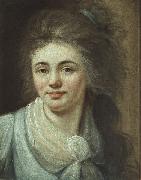 |
Ludovike Simanowiz
|
|
Deutsch: Friedrich Schiller (1759 - 1805), Ölgemälde von Ludovike Simanowiz 1793/94
English: Friedrich Schiller, German poet, philosopher, historian, and dramatist |
|
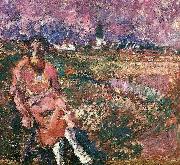 |
ludvig karsten
|
|
(Ludvig Peter Karsten), född 8 maj 1876 i Oslo, död 19 oktober 1926 i Paris, var en norsk målare. Han räknas som en av de viktigaste efterföljarna till Edvard Munch och räknades som en ledande impressionist. |
|
|
|
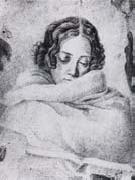 |
Ludwig Emil Grimm
|
|
1790-1863,German draughtsman, engraver and painter. He was a brother of the philologists and fairy-tale collectors Jakob Grimm (1785-1863) and Wilhelm Grimm (1786-1859). He attended the Kunstakademie in Kassel from 1805 to 1807. He then moved to Munich to study with the engraver Carl Ernst Hess (1755-1828), and he became a student at the Akademie der Bildenden Kenste there. He revealed a talent for portraiture in numerous sketches of his family and friends. In 1814 he served with the Prussian army in the military campaign against France, then completed his studies in Munich. In 1816 he visited Italy, |
|
|
|
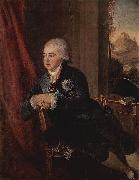 |
Ludwig Guttenbrunn
|
|
Ludwig Guttenbrunn (1750 - 1819) was an artist who worked in the latter part of the 18th century and early 19th century. He specialized in portraiture and history painting. |
|
|
|
|

